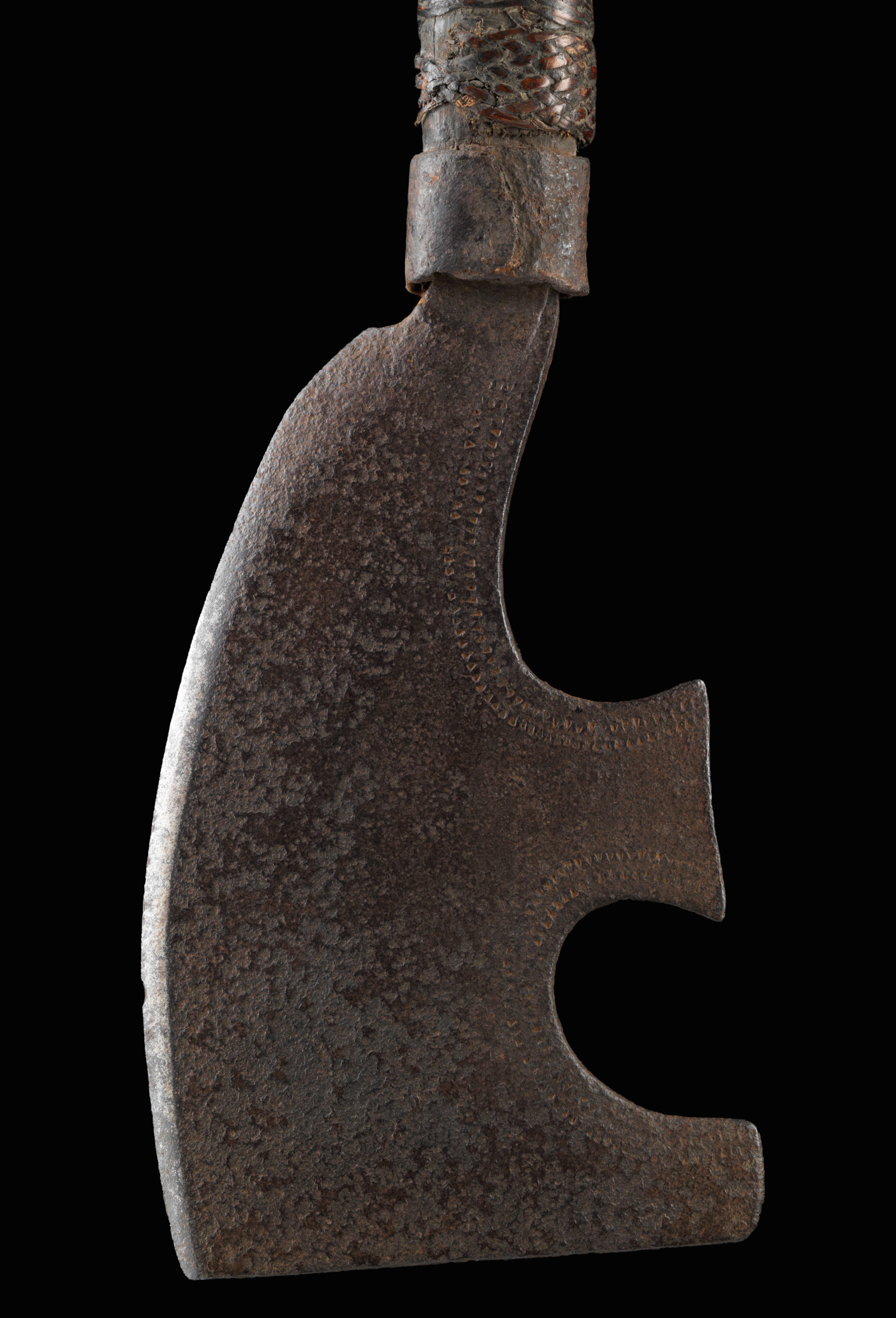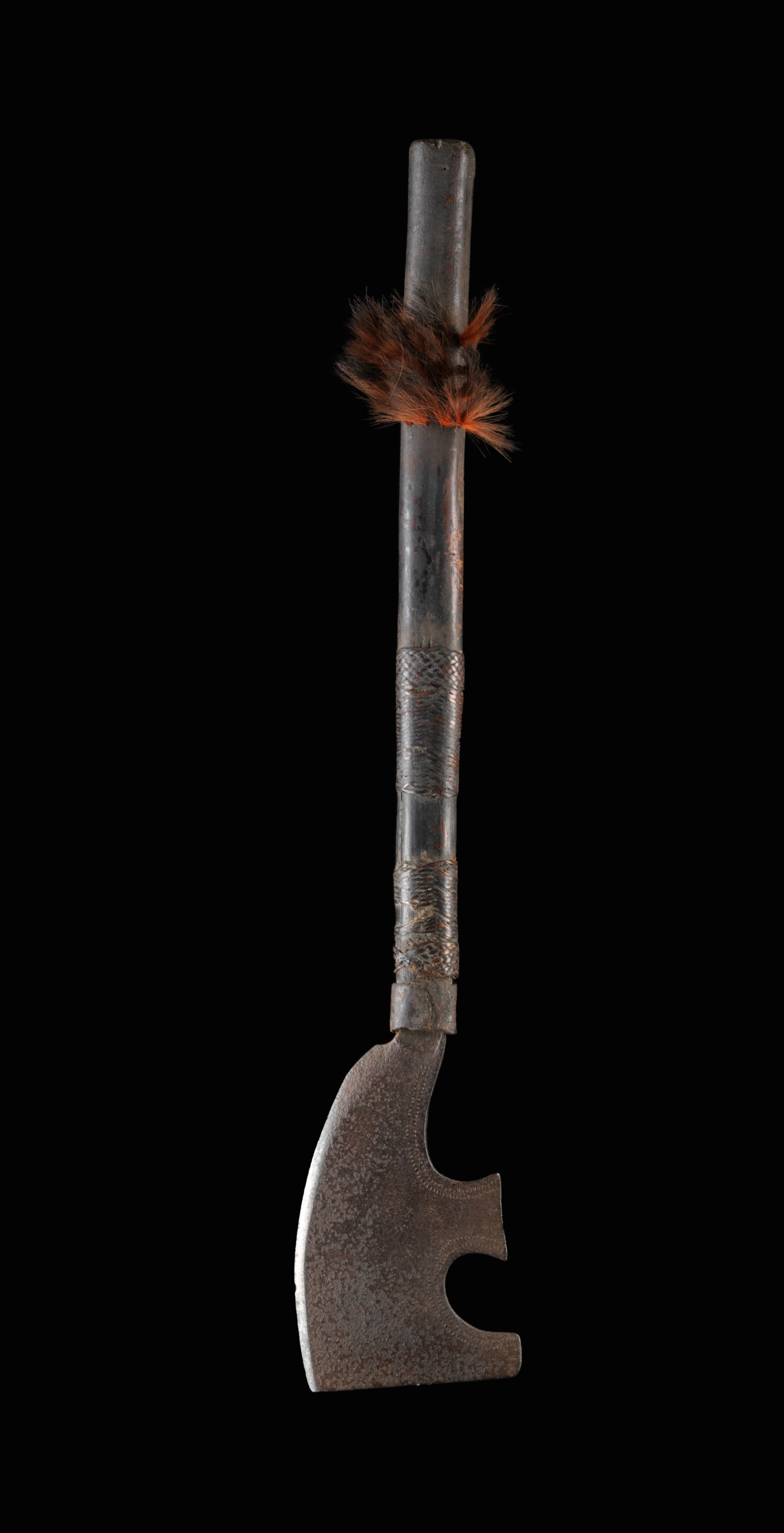Axe„dao“
| Object | Axe “dao” (milemnok dao) |
| Culture | Konyak-Naga, Ang group, India/Assam or Myanmar |
| Time | 19th century |
| Dimensions | Length 66,50 cm |
| Material | Steel, wood, rattan, goat hair |
Dao is an umbrella term for heavy, long-handled hack knives, which the Naga have to meet all daily requirements in addition to military applications. They exist in a variety of shapes and sizes, which differ from ethnicity to ethnicity. The milemnok-dao we see here represents an old, highly valued type known only to the Konyak Naga. It has a short leaf with a convex blade profile. The long, wooden handle is secured at the front by a strong iron ferrule to prevent splitting during hard use and has tufts of red coloured goat hair at the back. The front part, which is grasped during most activities, is covered with rattan wickerwork that is heavily worn by long use. The sharpening of the blade is one-sided and therefore individually suitable for right- or left-handed use only, like a carpenter’s hatchet. Characteristic is the double indentation in the back and the hallmarking, which make the axe unmistakable and which can already be seen on representations on bronze objects (kettle drums) from the second century of our era. The metal of the blade is locally manufactured. In the past, the Konyak were known for smelting their own iron and for forging it into Janglau, the Konyak word for dao.
Wearing this specific hatchet is a status card of the ang. The ang (or wang) are traditional sacred and secular village heads, who are considered sacred and inviolable as representatives of the ancestral sphere. Their word is law. They never take part in a campaign in order to keep the danger low. Their importance is particularly evident in aoleng, the largest festival of the Konyak (celebrated in April), dedicated to Kahwang, the “supreme being”, where spring is welcomed and the sowing is blessed. This festival, along with the initiation and harvest festival lao ong mo in August and September, was the main occasion for headhunting processions. The captured heads were usually hung in the baan community hall and the bachelor house. The number of heads taken increased the status of a warrior.
The Konyak are one of the largest Naga groups in terms of numbers. They live in Tirap, Longding, and the Changlang districts in Arunachal Pradesh; in the Sibsagar district (Assam) and in Myanmar. In Arunachal Pradesh they are also known as Wancho. The Konyak certainly practiced headhunting until a few decades ago and were considered very warlike. Face and hand tattoos proved the successful head hunter. In Nagaland, the Konyak inhabit the Mon district, also known as the “Land of Ang”. The Konyak language belongs to the subgroup of the northern Naga languages of the Sal group, which is part of the Sino-Tibetan.
Supplementing Literature Back to room view





